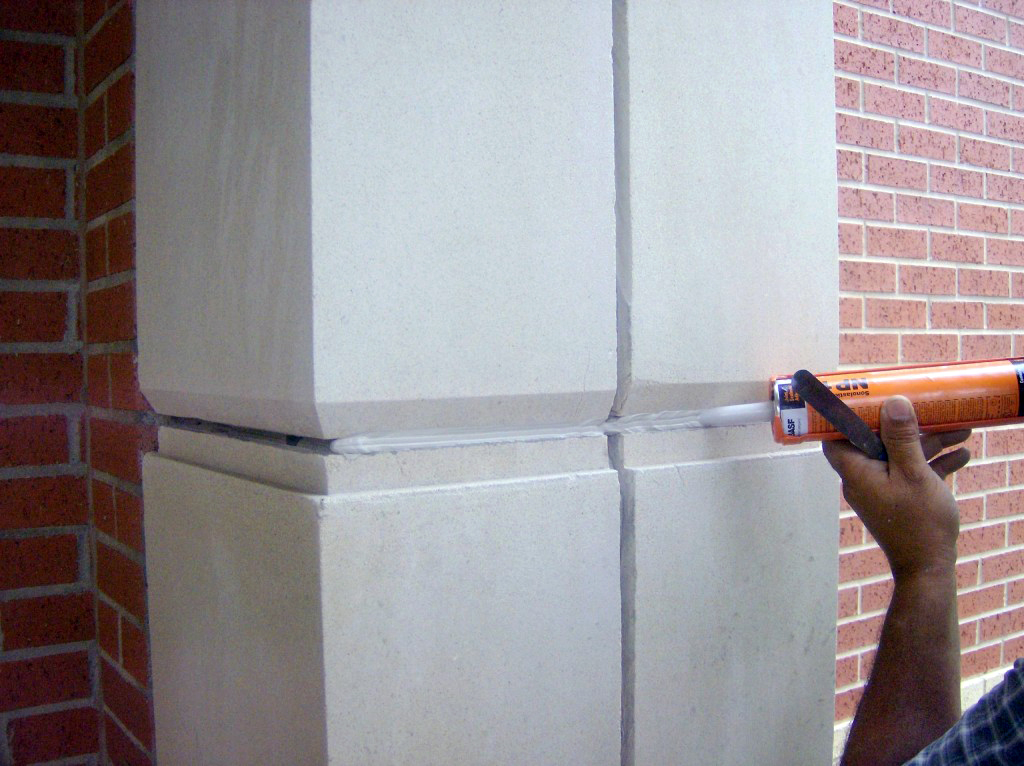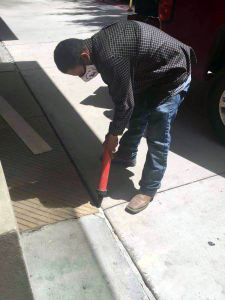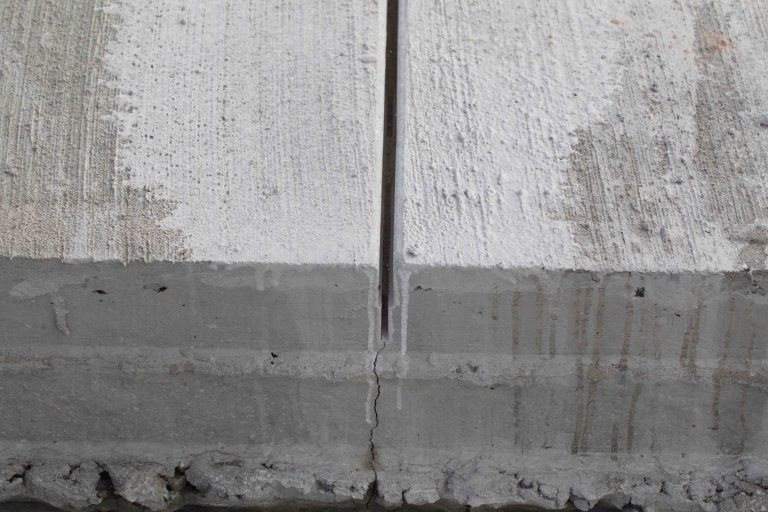- December 29, 2023
The gaps in-between the concrete slab in your driveway, parking lot at work or sidewalk are likely more important than you think. These gaps, also known as expansion joints, allow the different segments of concrete slab to both expand and contract as the temperature and humidity changes throughout the year.
To protect these areas it’s vital to maintain a watertight seal on the joints to prevent moisture from seeping under the concrete. If left exposed, the exposure to water can cause the concrete to heave, sink or crumble. Another variable to think about includes the size of the different segments of slab. The bigger one slab of concrete is without expansion joints breaking it up, the more likely it is to move ultimately resulting in damaged or cracked concrete.
Most expansion joints are filled with one of two different products — redwood or a flexible sealant caulking. Redwood joints are more common in residential properties due to their favorable aesthetic appearance and are effective at protecting the concrete by absorbing the moisture around the joint. The flexible sealant is a rubber looking substance that is made to self-level in the joint once applied and includes characteristics like remaining permanently flexible, quick drying, able to bond to anything and offers high weather resistance.
In addition to expansion joints along sidewalks, in parking lots and driveways, another important area that property owners and managers need to monitor are expansion joints between sidewalks and entrances that split up the concrete segments from the slab of the building or structure. While a cracked or heaved sidewalk may be a headache, possibly dealing with a heaved/sunk foundation is something no property owner or manager wants to deal with.
Failed caulking in these areas may be easy to pinpoint by a professional or someone with construction experience, however, your typical property owner or manager may not be privy to the warning signs of failing joint sealant.
Below are several identifiers to know whether or not your caulking needs to be replaced.
– Loose caulk hanging out of the joint entirely
– Separated caulking that has split open across the width of the joint leaving it exposed
– Completely exposed joint
– Broken or shattered redwood from rot. If the joint is filled with redwood then it has an expiration date. Like all wood, it will eventually rot and splinter.
Expansion joint sealant repair may not look like it would be difficult fix, but if you aren’t experienced, a faulty repair can be costly and extremely damaging to the property.
Repairs typically begin with the removal of the old caulking or redwood sealer. Once the former sealant is removed, or in new construction following the concrete’s installation, the next step is prepping the joint to be sealed. The joint should be cleaned with either a shop-vac or brush to remove any possible debris in the joint and then a backer rod is in put in place.
A backer rod, which is usually round and flexible, is used to help control the amount of flexible sealant that’s used in the joint and helps create a back stop. A backer rod has several benefits including increasing the elasticity in the sealer, controls the depth of the sealant within the joint, forces the adhesive to bond with the sides of the joint which helps create an ‘hour-glass shape’ signifying a superior bond and also helps to allow the joint to be easily cleaned out and re-sealed as needed over time.
In some situations a property may need the expansion joints re-sealed, but because of past neglect or procrastination with repairs resulting in a total sealant failure, there may be numerous cracks in the concrete threatening further damage. If caught soon enough the concrete may be salvaged by widening the cracks and filling them with a flexible sealant or epoxy.
Typically a hand chisel or crack chasing saw is used to widen the crack to 1/4’in across the whole distance of the affected area. Then, depending on the width and size of the fractured area, self-leveling caulk is applied. In some cases, especially when the fracture is larger, an epoxy filler is used. If the cracks are repaired correctly and are chased out all the way down to the deepest area then years of additional use without further damage is possible.
Failing concrete is an inevitability, but with proper maintenance and supervision of the variables that can lead to the failure, including expansion joint sealing, property owners and managers can limit the chances of a future headache.





